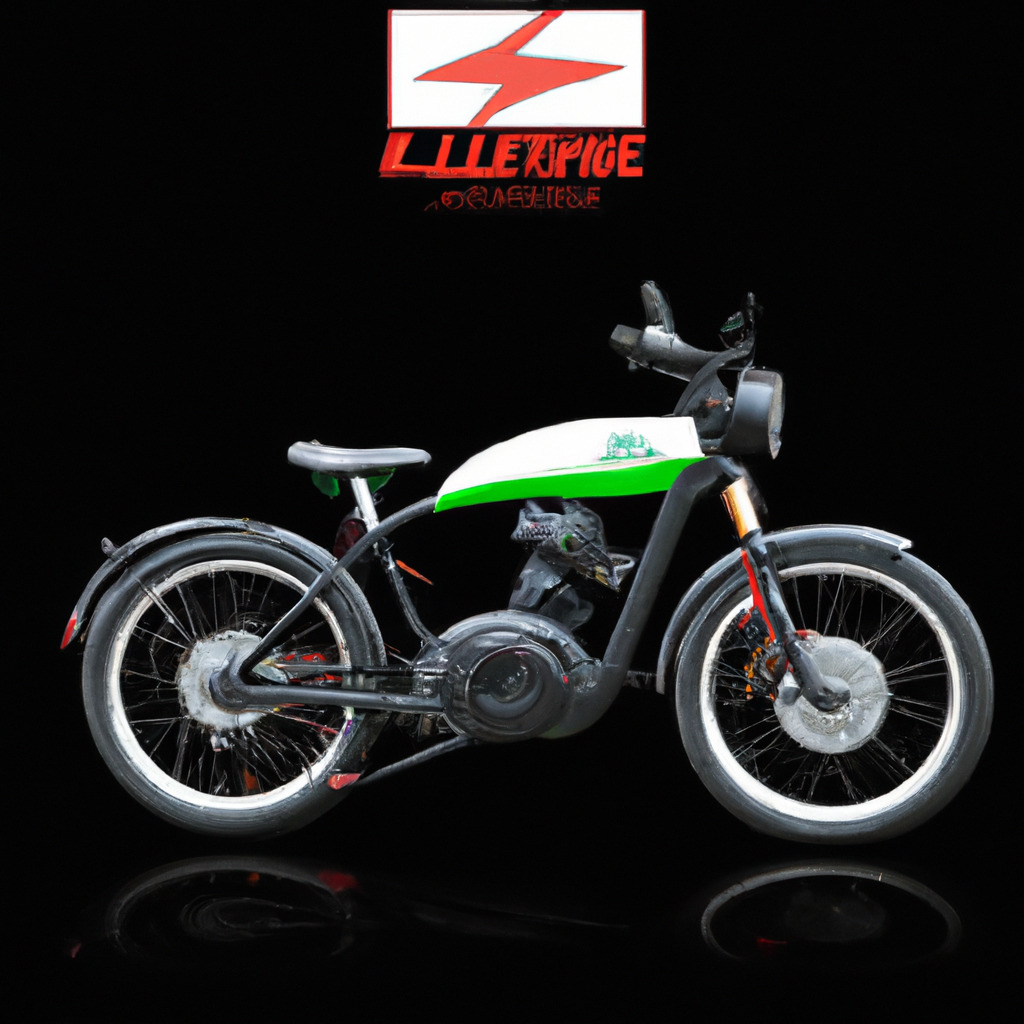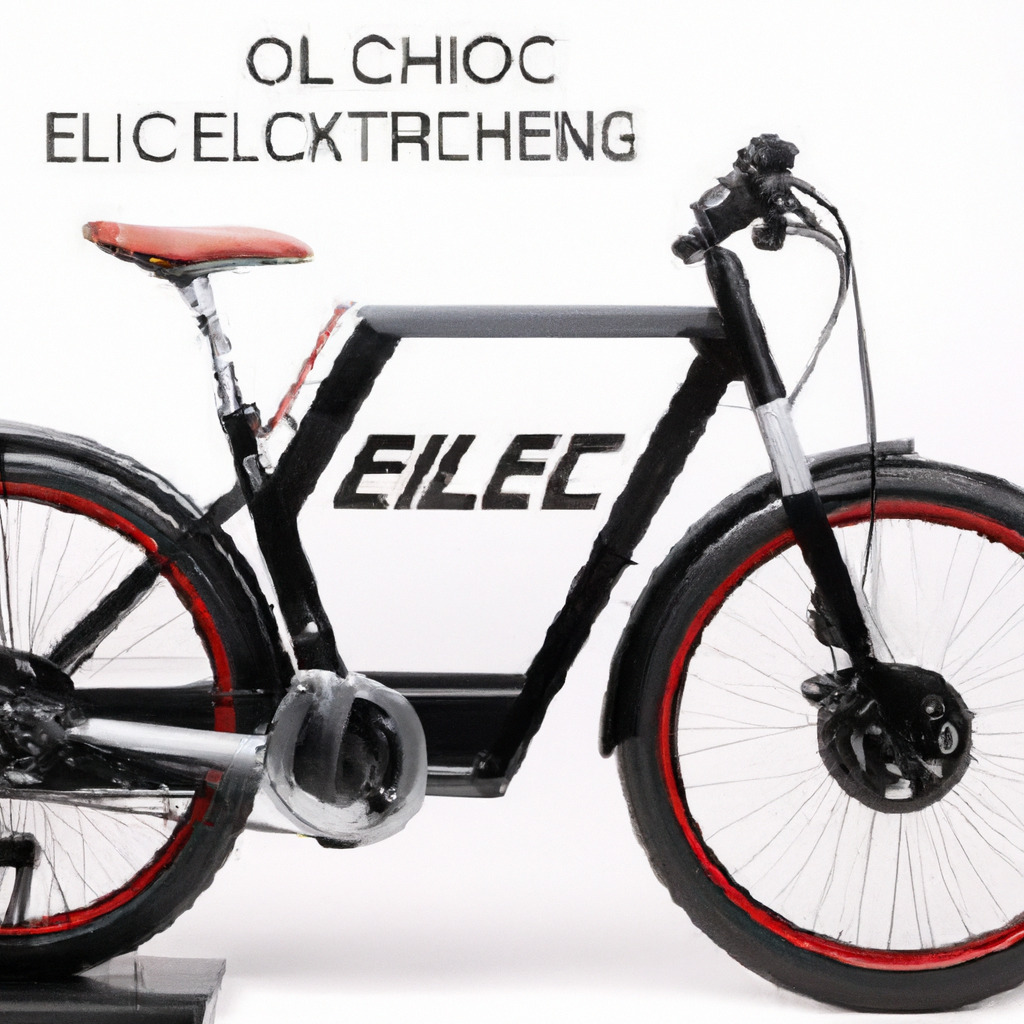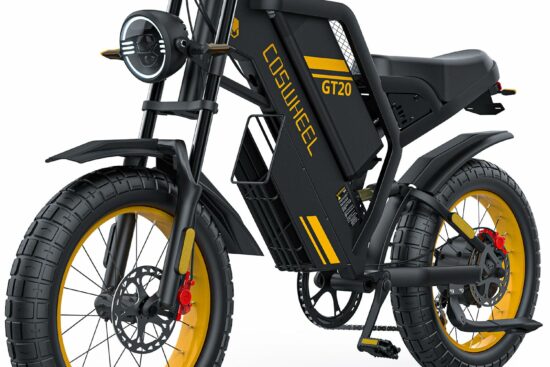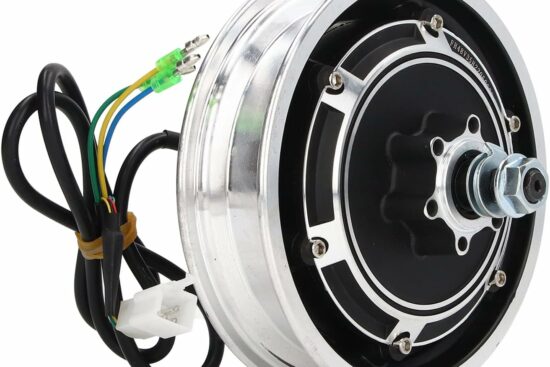
The future of electric bikes is evolving rapidly, driven by an array of innovative advancements. From advanced battery technologies to intelligent motor systems, the landscape of electric bikes is being revolutionized. As consumer demand for sustainable transportation grows, manufacturers are investing in cutting-edge designs and features that enhance performance, convenience, and efficiency. In this article, we will explore some of the key innovations shaping the future of electric bikes and their potential impact on the commuting and leisure cycling experience.

Lightweight Batteries
Advancement in battery technology
The future of electric bikes is being shaped by advancements in battery technology, particularly the development of lightweight batteries. Traditional electric bike batteries are often bulky and heavy, which can limit the overall performance and maneuverability of the bike. However, with the introduction of lightweight materials such as lithium-ion batteries, electric bikes are becoming more efficient, lighter, and easier to handle.
These advancements in battery technology have also led to improvements in battery range and capacity. With lightweight batteries, electric bikes can now travel longer distances on a single charge, making them a viable option for longer commutes or recreational rides. Additionally, the increased battery capacity means that riders don’t have to worry about running out of power in the middle of their journey.
Introduction of lightweight materials
The use of lightweight materials in electric bike batteries is revolutionizing the industry. Lithium-ion batteries are now the most commonly used battery type in electric bikes due to their higher energy density and lower weight compared to traditional lead-acid batteries. These lightweight materials not only contribute to the overall weight reduction of the bike but also improve its performance and handling characteristics.
The introduction of lightweight materials has also made electric bikes more accessible to a wider range of riders. People who may have previously been deterred by the weight and bulkiness of traditional electric bikes can now enjoy the benefits of electric pedal-assist without compromising Comfort or maneuverability.
Increased battery range and capacity
One of the key advantages of lightweight batteries is their increased range and capacity. The development of lightweight materials has enabled electric bike manufacturers to pack more energy into smaller battery packs, pushing the limits of how far an electric bike can travel on a single charge.
With increased battery range, electric bike riders can now embark on longer journeys without the worry of running out of power. Whether it’s a scenic countryside ride or a daily commute, riders can have the confidence that their electric bike will take them wherever they need to go.
Moreover, the larger battery capacities also extend the overall lifespan of the battery, reducing the need for frequent replacements and providing a more cost-effective solution for electric bike owners. The combination of increased range and capacity makes electric biking a more practical and convenient mode of transportation for both urban riders and adventure enthusiasts alike.
Smart Connectivity
Integration with smartphone apps
One of the key innovations shaping the future of electric bikes is their integration with smartphone apps. With the rise of smartphones and the increasing number of people relying on them for various aspects of their lives, it only makes sense to leverage this technology to enhance the electric bike riding experience.
Smartphone apps allow riders to connect their electric bikes wirelessly, providing a seamless interface for controlling various aspects of the bike. By simply downloading the app and pairing their smartphone with the bike, riders can access a range of features such as personalized settings, battery monitoring, and navigation assistance.
Real-time monitoring and control
Smart connectivity enables real-time monitoring and control of electric bikes. Through the smartphone app, riders can access data such as battery life, speed, distance traveled, and even the number of calories burned during a ride. This information allows riders to make more informed decisions about their rides, such as adjusting their pedal-assist level based on the remaining battery life.
Real-time monitoring also plays a crucial role in safety. Electric bikes with smart connectivity can send alerts to the rider if there are any issues with the bike, such as low battery or mechanical problems. This timely Alert system ensures that riders can address any potential problems before they become critical, minimizing the risk of being stranded or experiencing mechanical failures during a ride.
GPS tracking and navigation
Another significant benefit of smart connectivity is the integration of GPS tracking and navigation features. With these features, riders can easily plan and navigate their routes, ensuring they reach their destinations efficiently and accurately. Gone are the days of manually consulting maps or relying on a separate GPS device; everything can now be accessed directly from the smartphone app.
GPS tracking also enhances the security of electric bikes. In the unfortunate event of a theft, riders can track the location of their bike through the app, enabling them to take immediate action or notify the authorities. This added layer of security provides peace of mind to electric bike owners, knowing that their investment can be easily retrieved in case of theft.
Overall, the smart connectivity of electric bikes through smartphone apps adds a new level of convenience, safety, and customization to the riding experience. As technology continues to advance, we can expect even more innovative features that will further enhance the connectivity between riders and their electric bikes.
Wireless Charging
Efficient and convenient charging
Wireless charging technology is another innovation that is shaping the future of electric bikes. By eliminating the need for messy cables and connectors, wireless charging provides a more efficient and convenient way to charge the batteries of electric bikes.
With wireless charging, riders no longer have to fumble with cables or search for an electrical outlet. Instead, they can simply place their electric bike on a charging pad or docking station, and the charging process initiates automatically. This Seamless and hands-free charging experience simplifies the daily routine of electric bike owners and ensures that their bikes are always ready to go.
Elimination of messy cables
The integration of wireless charging technology eliminates the need for traditional charging cables, effectively reducing clutter and improving the overall aesthetics of electric bike charging stations. This is particularly important for urban environments and public spaces where maintaining a clean and organized charging area is crucial.
Furthermore, the absence of cables reduces the risk of tripping or accidents caused by loose or damaged charging connectors. With wireless charging, riders can confidently park their electric bikes and charge them without worrying about cable management or damaging the bike’s charging ports.
Integration with docking stations
Wireless charging technology can also be seamlessly integrated with docking stations, further enhancing its convenience. Public spaces, bike sharing programs, and even private residences can incorporate charging docks that wirelessly charge electric bikes.
Docking stations equipped with wireless charging pads could be strategically placed at various locations, allowing riders to conveniently park and charge their bikes while they attend to other activities. This integration with docking stations opens up numerous possibilities for electric bike users, such as charging their bikes at work, shopping centers, or even during a quick coffee break at a café.
The wireless charging innovation in electric bikes provides a practical and user-friendly solution for keeping the batteries charged without the hassle of cables or connectors. As this technology continues to evolve and become more widely adopted, we can expect to see a significant shift towards wireless charging as the standard charging method for electric bikes.
Regenerative Braking
Conversion of kinetic energy
Regenerative braking is a groundbreaking technology that aims to utilize the kinetic energy generated during braking to recharge the battery of electric bikes. When a rider applies the brakes, regenerative braking systems kick in, converting the energy from deceleration into electrical energy, which is then stored in the bike’s battery for later use.
This innovative technology not only improves the overall efficiency of electric bikes but also maximizes the utilization of energy by recycling what would traditionally be wasted energy during the braking process. By harnessing the power of regenerative braking, electric bikes can extend their range and reduce the frequency of battery recharging.
Increased efficiency and battery life
The implementation of regenerative braking systems significantly improves the efficiency and battery life of electric bikes. With the ability to convert kinetic energy into electrical energy, electric bikes can recover a portion of the energy they consume during acceleration, resulting in reduced energy consumption.
The increased efficiency also translates into longer battery life. By supplementing the battery charge with energy generated through regenerative braking, riders can experience extended riding distances without worrying about depleting the battery. This not only provides more flexibility in planning longer rides but also saves on battery replacement costs over time.
Reduced wear on brake pads
In addition to the energy-saving benefits, regenerative braking also helps reduce wear on brake pads, resulting in lower maintenance costs. When a rider uses the traditional braking system, the brake pads experience wear and tear due to the friction involved in stopping the bike. However, with the integration of regenerative braking, riders can rely on the electric motor to assist in the braking process, reducing the load on the brake pads.
The reduced wear and tear on brake pads not only lead to cost savings in brake pad replacements but also lower the overall maintenance requirements of the electric bike. By minimizing the strain on the traditional braking system, riders can enjoy a more reliable and durable braking performance, ensuring a safer and more enjoyable riding experience.
Regenerative braking is an innovative technology that not only improves the efficiency, range, and battery life of electric bikes but also enhances the overall sustainability of electric transportation. As more electric bike manufacturers adopt this technology, we can expect to see increased energy efficiency and reduced environmental impact in the years to come.

Advanced Motor Technology
More powerful and efficient motors
Advanced motor technology plays a crucial role in shaping the future of electric bikes. The development of more powerful and efficient motors enables electric bikes to deliver an enhanced riding experience, whether it’s for daily commuting or off-road adventures.
With advancements in motor technology, electric bikes can now achieve higher speeds and overcome challenging terrains with ease. More powerful motors ensure that riders can reach their destinations faster, while efficient motors optimize the energy consumption, allowing for longer rides between charges.
Improved torque and acceleration
The improvement in motor technology also translates to improved torque and acceleration. Electric bikes equipped with advanced motors offer instant and smooth acceleration, providing riders with a thrilling riding experience. Whether it’s navigating through urban traffic or conquering steep hills, the enhanced torque and acceleration capabilities of advanced motors make electric bikes a formidable mode of transportation.
Moreover, improved torque and acceleration contribute to the overall safety of electric bikes. With the ability to quickly accelerate from a standstill, electric bikes can easily keep up with traffic and maneuver through congested areas. This makes them a practical alternative to traditional bicycles or cars, especially in urban environments where time and efficiency are of the essence.
Silent operation
One of the distinctive features of electric bikes equipped with advanced motors is their silent operation. Unlike traditional gas-powered motorcycles or scooters, electric bikes produce minimal noise, resulting in a more pleasant and peaceful riding experience.
The silent operation of electric bikes also contributes to the overall reduction in noise pollution, making them an environmentally friendly choice for urban commuting or recreational rides in nature. Additionally, the lack of engine noise allows riders to fully immerse themselves in the surroundings, enjoying the sights and sounds of their journey without disturbance.
The advancements in motor technology continue to push the boundaries of electric bike performance, providing riders with more power, efficiency, and comfort. As electric bikes become increasingly popular, we can expect to see further innovations and improvements in motor technology that will further enhance the riding experience.
Foldable and Portable Designs
Compact and space-saving
Foldable and portable designs are revolutionizing the way we perceive electric bikes. With the introduction of compact and space-saving designs, riders can easily fold and store their electric bikes in smaller spaces, making them a practical transportation option for urban dwellers or those with limited storage space.
Foldable electric bikes typically feature hinges and locking mechanisms that allow the bike frame to be conveniently folded into a compact size. This design allows riders to easily carry and store their electric bikes in small apartments, offices, or public transportation vehicles without the need for additional storage facilities.
The compact nature of foldable electric bikes also makes them highly versatile for various transportation modes. Riders can effortlessly fold their bikes and take them on public buses, trains, or even airplanes, enabling them to seamlessly transition between different modes of transportation during their journeys.
Easy transportation and storage
The portability of folding electric bikes also offers convenience when it comes to transportation and storage. For riders who frequently embark on multi-modal commutes, such as combining cycling with public transportation, the ability to fold and carry their electric bikes allows for a hassle-free transition between different transportation modes.
In terms of storage, the compact size of foldable electric bikes eliminates the need for dedicated bike racks or large storage spaces. Electric bike owners can simply fold and store their bikes in a closet, under a desk, or even in the trunk of a car, saving valuable space in their living or working environments.
Foldable electric bikes are particularly attractive for riders residing in urban areas, where space is a premium. With the ability to effortlessly fold, store, and transport their bikes, urban riders can enjoy the benefits of electric bikes without the space constraints associated with traditional non-foldable models.
Integration with public transportation
Foldable electric bikes also integrate seamlessly with public transportation systems, offering riders a convenient and eco-friendly alternative to cars or traditional bicycles. Many public transportation systems now allow the carriage of foldable electric bikes on trains and buses, further enhancing their usability and accessibility.
The integration with public transportation not only solves the issue of the “first and last mile” problem, but it also contributes to reducing traffic congestion and addressing environmental concerns. By combining electric biking with public transportation, riders can enjoy the best of both worlds – the flexibility and efficiency of electric bikes paired with the convenience and reach of public transportation.
Foldable and portable designs are transforming the electric bike industry by providing riders with compact, versatile, and easy-to-store transportation options. As more people embrace the benefits of electric bikes, we can expect to see further advancements in foldable designs, making them an increasingly popular choice for urban commuters, adventurers, and those seeking a convenient and environmentally friendly mode of transportation.
Enhanced Safety Features
Automated collision detection and avoidance
Enhanced safety features are playing a crucial role in shaping the future of electric bikes. With advancements in technology, electric bikes can now incorporate automated collision detection and avoidance systems to minimize the risk of accidents and improve rider safety.
Using a combination of sensors, cameras, and artificial intelligence, these safety systems continuously monitor the surroundings, alerting the rider to potential collisions and taking corrective actions to avoid accidents. For example, if the system detects an imminent collision with an object or another vehicle, it can automatically apply the brakes or adjust the steering to prevent or mitigate the impact.
These automated safety systems are particularly valuable in dense urban environments where traffic and potential hazards can be unpredictable. By providing riders with an added layer of protection, electric bikes equipped with collision detection and avoidance systems improve overall safety and instill confidence in riders.
Integrated lighting systems
Integral to safety, electric bikes are now incorporating advanced lighting systems. Integrated lighting systems feature powerful LED lights positioned strategically on the front, rear, and sides of the electric bike, enhancing visibility for both the rider and other road users.
During low light conditions or at night, the bright LED lights ensure that the electric bike is easily seen by pedestrians, motorists, and other cyclists. This improves the overall safety of the rider, reducing the risk of accidents caused by poor visibility.
In addition to visibility, integrated lighting systems also provide signaling capabilities, allowing riders to indicate their intention to turn or change lanes. This enables riders to communicate with other road users effectively, further improving the overall safety and smooth flow of traffic.
Stability and traction control
Electric bikes are now equipped with stability and traction control systems, further enhancing safety and confidence for riders. These systems use a combination of sensors and intelligent algorithms to monitor and regulate the delivery of power to the wheels, ensuring optimal traction and stability in various road conditions.
During acceleration or when encountering slippery surfaces, stability and traction control systems adjust the power output to the wheels, preventing wheel spin and loss of control. This is particularly important for off-road or uneven terrains, where maintaining stability and control is crucial for rider safety.
By incorporating stability and traction control, electric bikes provide riders with an added layer of safety, especially when navigating challenging road conditions. These systems enable riders to confidently tackle rough terrains or adverse weather conditions, knowing that their electric bikes will adapt and maintain stability.
Enhanced safety features in electric bikes are pivotal in shaping the future of electric bike technology. As technology continues to advance, we can expect even more sophisticated safety systems that will further improve rider safety and provide peace of mind for electric bike owners.
Intelligent Assist Systems
Adaptive power assistance
Intelligent assist systems are becoming increasingly prevalent in electric bikes, offering riders a more personalized and efficient riding experience. These systems utilize various sensors and algorithms to monitor the rider’s pedaling cadence, speed, and effort, adjusting the level of power assistance accordingly.
By dynamically adapting the power assistance, intelligent assist systems provide riders with just the right amount of support, maximizing the efficiency of each pedal stroke. For example, when climbing a steep hill or encountering strong headwinds, the intelligent assist system can increase the power assistance to help riders overcome these challenging conditions with ease.
Adaptive power assistance not only enhances the comfort and ease of riding but also extends the overall battery range. By utilizing the power assistance judiciously, riders can conserve battery power during less demanding situations, allowing for longer rides without the need for recharging.
Automatic gear shifting
Electric bikes equipped with intelligent assist systems often feature automatic gear shifting capabilities. These systems automatically adjust the gear ratio based on the rider’s pedaling cadence and the terrain conditions, ensuring that the rider is always in the optimal gear for the most efficient and comfortable pedaling experience.
Automatic gear shifting simplifies the riding experience, eliminating the need for manual gear adjustments by the rider. This is particularly beneficial for riders navigating hilly terrains or encountering constant changes in elevation, where continually adjusting gears can be cumbersome and distracting.
By optimizing gear shifting, intelligent assist systems contribute to a smoother and more enjoyable riding experience. Riders can focus on the road ahead, trusting that the electric bike will seamlessly adjust the gears to match their pedaling style and the terrain conditions.
Smart sensors for rider-monitoring
Intelligent assist systems also incorporate smart sensors for rider monitoring, providing valuable data and insights to enhance the overall riding experience. These sensors can measure vital signs such as heart rate, calorie burn rate, and effort exerted by the rider.
By monitoring these metrics in real-time, intelligent assist systems can provide feedback and suggestions to riders, helping them optimize their riding performance and achieve their fitness goals. For example, if the system detects that the rider’s effort is decreasing or heart rate is not within the target range, it can adjust the power assistance or provide motivational prompts to encourage higher exertion levels.
Smart sensors for rider-monitoring also contribute to safety by detecting any irregularities or signs of fatigue. If the sensors identify potential health issues or exhaustion, the intelligent assist system can provide alerts or suggestions for the rider to take a break or seek medical attention.
Intelligent assist systems are advancing the capabilities of electric bikes, offering riders a personalized and efficient riding experience. As these systems become more sophisticated and integrated, riders can expect even greater levels of personalization, performance optimization, and health monitoring in the future.
Innovative Frame Materials
Lightweight and durable materials
Innovative frame materials are revolutionizing the design of electric bikes, offering a perfect balance of strength, durability, and lightweight characteristics. Traditional electric bikes often featured heavy and clunky frames, making them less agile and maneuverable. However, with the introduction of new materials such as carbon fiber and aluminum alloys, electric bike frames can now be both lightweight and strong.
Lightweight frame materials contribute to the overall weight reduction of the electric bike, improving its handling, acceleration, and maneuverability. By reducing the weight of the bike, riders can enjoy a more dynamic and responsive riding experience, making electric biking a joyous and effortless activity.
Despite their lightweight nature, innovative frame materials do not compromise on durability. Carbon fiber and aluminum alloys are known for their structural integrity, ensuring that electric bike frames can withstand the rigors of daily use, off-road adventures, or even extreme conditions. The combination of lightweight and durable materials is transforming the electric bike industry, providing riders with a winning combination of performance and reliability.
Improved strength and durability
In addition to being lightweight, innovative frame materials offer improved strength and durability over traditional frame materials. Carbon fiber, for example, is known for its exceptional strength-to-weight ratio, making it an ideal choice for electric bike frames.
The strength and durability of innovative frame materials allow electric bikes to absorb shocks and vibrations, providing a comfortable and smooth ride. Whether it’s navigating potholes, rail tracks, or uneven surfaces, the advanced frame materials ensure that riders can enjoy a stable and controlled ride, even in challenging conditions.
Moreover, the improved strength and durability of electric bike frames reduce the risk of frame failure or damage, providing peace of mind to riders. These frames are designed to withstand the physical demands of electric bike riding, ensuring longevity and minimizing maintenance requirements.
Customizable designs
Another advantage of innovative frame materials is the freedom it provides for customizable designs. Unlike traditional frame materials, which often limited the design possibilities due to their manufacturing constraints, innovative frame materials offer flexibility in creating unique and aesthetically pleasing electric bike designs.
Electric bike manufacturers can experiment with various frame shapes, tube profiles, and geometries to optimize performance, comfort, and visual appeal. Customizable frame designs enable riders to choose an electric bike that not only matches their riding preferences but also reflects their style and personality.
Customization also extends to the integration of additional features or accessories. With innovative frame materials, electric bike manufacturers can seamlessly incorporate racks, fenders, lights, or even storage compartments into the frame design, further enhancing the functionality and versatility of electric bikes.
Innovative frame materials are redefining the possibilities of electric bike design, offering riders lightweight, durable, and customizable options. As technology and materials continue to advance, we can expect even more innovative frame designs that will further optimize the riding experience and aesthetics of electric bikes.
Artificial Intelligence Integration
AI-based predictive maintenance
The integration of artificial intelligence (AI) in electric bikes is revolutionizing the maintenance process. AI-based predictive maintenance systems monitor various components and systems of the electric bike, analyzing data in real-time to identify potential issues or maintenance requirements before they become critical.
By continuously monitoring parameters such as battery health, motor performance, and overall system diagnostics, AI-based predictive maintenance systems can alert riders or service technicians to any impending problems. This proactive approach allows for timely intervention, reducing the risk of unexpected breakdowns or costly repairs.
Moreover, AI-based predictive maintenance systems optimize the maintenance process, avoiding unnecessary scheduled maintenance or component replacements. By analyzing data and performance trends, the maintenance system can make accurate recommendations for service intervals or part replacements, ensuring that maintenance is conducted only when necessary.
Enhanced rider experience and customization
AI integration in electric bikes allows for a heightened rider experience and customization. By analyzing data from various sensors, such as rider preferences, road conditions, and weather conditions, AI systems can adapt and personalize the electric bike settings for each rider.
For example, based on the rider’s weight, preferred riding style, and route preferences, the AI system can adjust the power assistance level, gear ratio, and suspension settings, providing a more tailored and comfortable experience. These personalized settings enhance comfort, control, and overall satisfaction during rides, making each journey a unique and enjoyable one.
AI integration also provides the opportunity for continuous learning and improvement. With each ride, the AI system can learn from the rider’s feedback and performance, continuously adapting to provide an even better riding experience over time. This self-learning capability ensures that riders always have access to the most optimized and personalized settings for their electric bikes.
Integration with smart home systems
The integration of artificial intelligence in electric bikes opens up possibilities for seamless connectivity with other smart home systems. By leveraging the power of AI, electric bikes can communicate with smart home devices such as voice assistants, security systems, or energy management systems, offering a connected and integrated lifestyle experience for riders.
For example, riders can use voice commands to control their electric bikes, such as turning the bike on or off, adjusting power settings, or even accessing navigation assistance. Additionally, electric bikes can provide valuable data to the smart home system, allowing for better energy management or insights into the rider’s overall health and fitness.
The integration with smart home systems not only enhances convenience but also contributes to overall sustainability. Electric bikes can be part of a larger eco-friendly ecosystem within the smart home, optimizing energy usage and reducing the carbon footprint.
Artificial intelligence integration in electric bikes is redefining the boundaries of customization, connectivity, and convenience. As this technology continues to advance, electric bike riders can expect even more intelligent systems that will further enhance their riding experience and seamlessly integrate with their daily lives.
In conclusion, electric bikes are undergoing significant advancements, characterized by lightweight batteries, smart connectivity, wireless charging, regenerative braking, advanced motor technology, foldable and portable designs, enhanced safety features, intelligent assist systems, innovative frame materials, and artificial intelligence integration. Each of these innovations contributes to a more efficient, convenient, and enjoyable electric biking experience.
As battery technology evolves, lightweight materials and increased battery range and capacity allow electric bikes to travel longer distances on a single charge. The integration of smartphone apps provides real-time monitoring and control, as well as GPS tracking and navigation capabilities. Wireless charging eliminates the need for messy cables and integrates with docking stations for convenient charging.
Regenerative braking systems convert kinetic energy, increasing efficiency and battery life while reducing wear on brake pads. Advanced motor technology improves power, torque, acceleration, and offers silent operation. Foldable and portable designs facilitate compact storage and integration with public transportation.
Enhanced safety features such as collision detection, lighting systems, stability and traction control ensure rider safety. Intelligent assist systems adjust power assistance and automatically gear shift for optimal performance, while smart sensors monitor rider health and provide real-time feedback.
Innovative frame materials offer lightweight yet durable options with customizable designs. Artificial intelligence integration enables predictive maintenance, enhances rider experience and customization, and integrates with smart home systems, creating a connected and intelligent electric biking ecosystem.
As electric bikes continue to evolve and embrace these innovations, riders can anticipate an enhanced and personalized riding experience with improved range, performance, safety, and convenience. The future of electric biking is bright, and these innovations are just the beginning of a continued transformation in sustainable transportation.




















